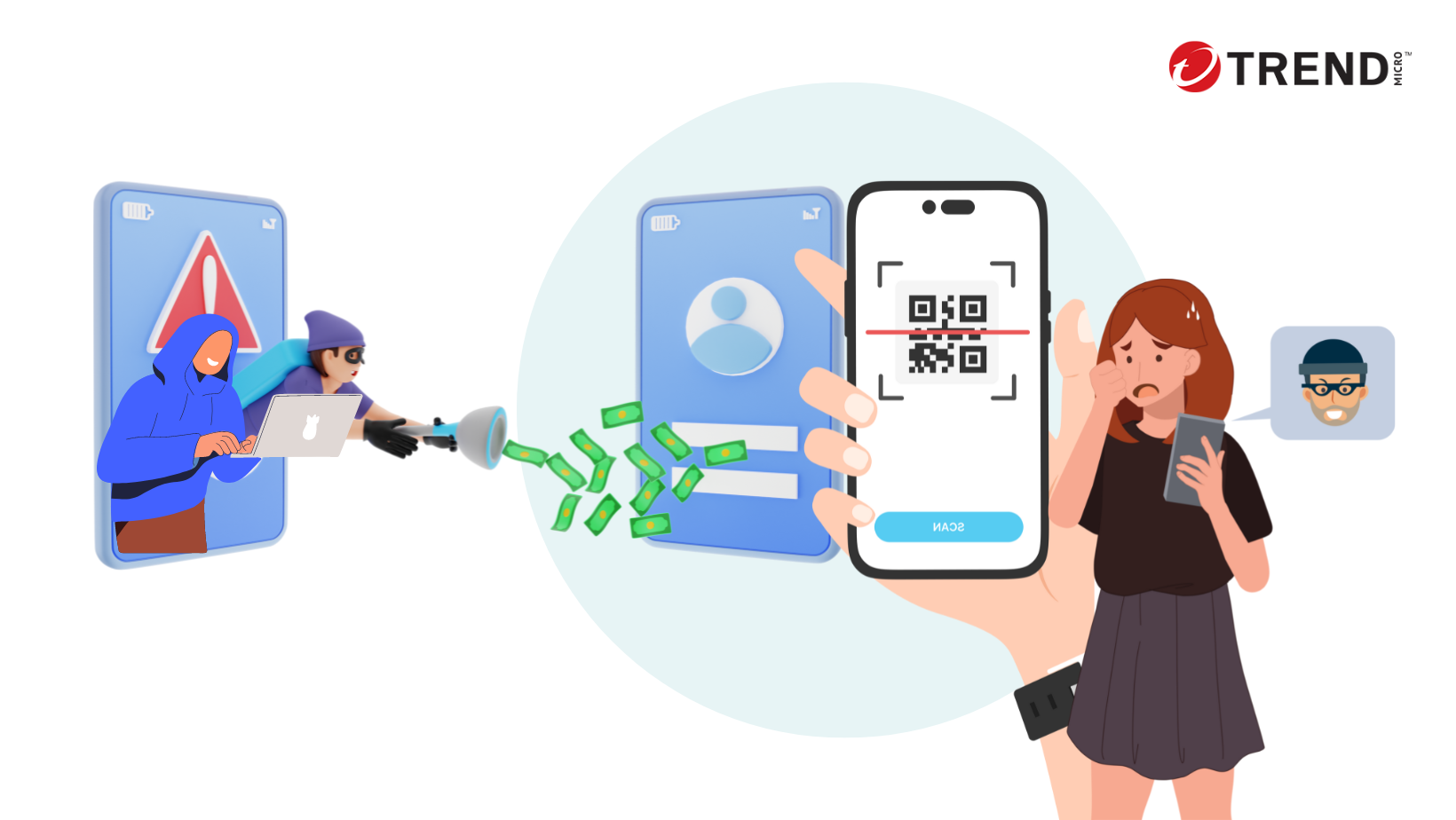Trend Security Expert
•
866 Messages
•
34.9K Points
What are malicious QR codes?
We all love shopping, traveling, and social gatherings. It's likely that you've already come across QR codes, while you are walking around the mall or while sitting in a restaurant with a digital menu. They serve many functions, such as sharing product information, redirecting users to websites, or even facilitating contact tracing during the pandemic. QR codes are widely popular for contactless payment. As our needs evolve, we seek more convenient, efficient, and secure methods for conducting payment transactions, which is where QR code scanning comes into play.
QR codes are widely used for contactless payments. They allow customers to make purchases by simply scanning the code and authorizing the transaction on their smartphone, without the need for cash or cards.
What is a QR Code?
QR codes (Quick Response codes) are two-dimensional barcodes that can be scanned using a smartphone or other mobile device equipped with a QR code reader app.
However, malicious QR codes can be created and used by cybercriminals to launch various types of attacks.
What are malicious QR codes and how do they harm you?
Malicious QR codes are QR codes that contain harmful information such as phishing links, malware downloads, or fraudulent transactions. They can be placed in public places such as posters, flyers, stickers, etc., sometimes covering up legitimate QR codes.

Attackers use malicious QR codes in several ways, including:
- Embedding malicious URLs within QR codes can lead to scams such as phishing, malware, and ransomware.
- Replacing legitimate QR codes with their own compromised ones by pasting them over existing ones.
- Sending malicious QR codes via email or social media to deceive users into scanning them.
Tips to spot a fake QR code:
- Look for signs of tampering, like stickers or labels covering a legitimate QR code, or codes that are placed in unusual locations or contexts.
- Check if the QR code matches the service or product you are expecting. If the QR code seems unrelated to the context or location, it might be suspicious.
- Verify the source of the QR code. Only scan codes provided by trusted entities or individuals and avoid scanning publicly available codes that are likely to be modified by fraudsters.
- Check the link where the QR code is redirecting. Before scanning, preview the URL contained in the code and pay attention to small spelling errors or unusual domains that might indicate a fake website.
Trend Micro QR Scanner for Android:
- Scans all QR codes easily, quickly, and safely
- Dangerous apps or websites are blocked and reported instantly
- It contains no 3rd-party advertisements
- You can scan from the live camera or from saved images
- It’s 100% Free.
- Learn more about Trend Micro QR Scanner for Android







No Responses!